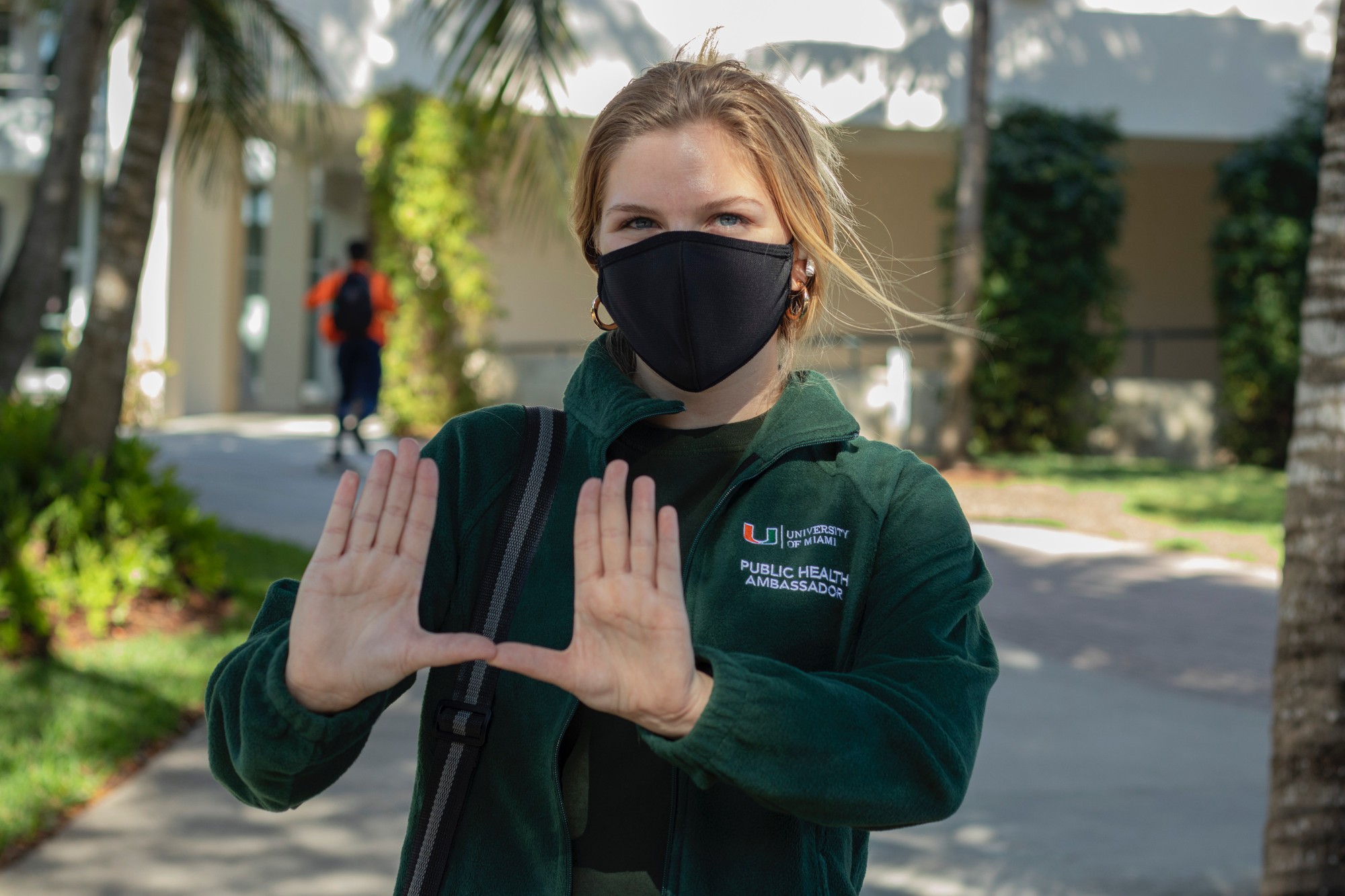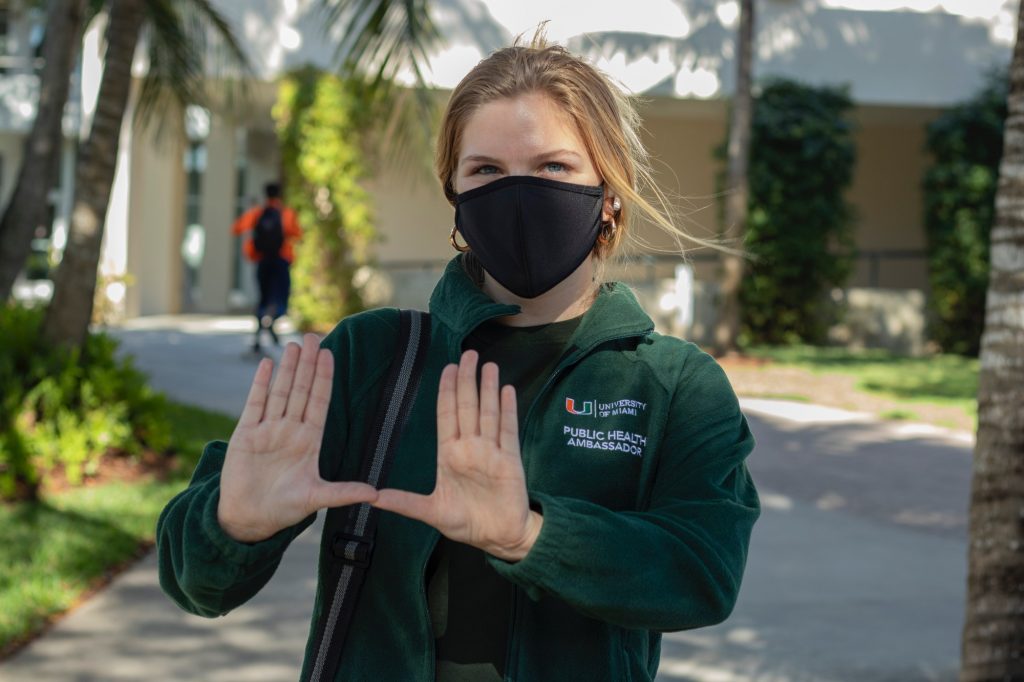

After an unprecedented fall semester at the University of Miami, leadership decided to expand the Public Health Ambassadors program, which is going into its second semester.
Between UM’s abrupt closing in March and the start of the fall semester, Senior Vice President of Student Affairs Patricia Whitely and Director of the Butler Center for Services and Leadership Andrew Wiemer founded the Public Health Ambassadors, or PHA, program.
For Whitely and Wiemer, the PHA program intended to provide structure to UM’s commitment to safely reopen its campuses, but while it was devised by faculty, the program was driven by students.
In the weeks preceding the fall semester, Wiemer led the hiring of 75 ambassadors who were then informed of their responsibilities and trained on how to enforce UM’s COVID-19 policies and guidelines, which includes wearing masks in public spaces, physical distancing in and out of the classroom, weekly COVID testing and completion of the Daily Symptom Checker.
“All public health ambassadors go through a rigorous two-hour training that is in coordination with the Office of Emergency Management,” Wiemer said. “We worked very closely and helped provide training to the students so that they knew of all the health regulations and policies surrounding COVID-19 prior to their shifts and responsibilities.”
However, due to the increased number of students attending in-person classes this spring, roughly 85 percent of the total enrolled population, the PHA program boosted its staff capacity to 100. The expansion came as part of multiple changes by the program between the fall and spring semesters to amplify their efforts to slow the spread of COVID-19 on campus.
“There was a huge learning curve for how we would implement these policies and there were a lot of questions along the way that weren’t necessarily anticipated,” sophomore music major Louisa Khan said. “How do we deal with someone who doesn’t live on campus or someone who is a community member that doesn’t understand our policy? As we ran into these hiccups, we were able to work together to implement new policies. It just became a living, breathing program.”

While on the job, the health ambassadors are frequently seen enforcing mask-wearing and the completion of UM’s Daily Symptom Checker, but their responsibilities as leaders on campus extend beyond that. Depending on their experience and current position on the PHA team, students can assume leadership roles within the program.
For junior public health major Katie Ghougasian, her job as a PHA has drastically changed between semesters since assuming the new role of a team lead.
“There are PHAs that serve as Team Leads, and they have a slightly longer shift than a regular PHA shift. We are responsible for checking in with all the PHAs on shift and making sure that their shift is going well and giving them more masks if they need them,” Ghougasian said.
Ghougasian highlighted the important role ambassadors play in ensuring safety on campus.
“While students are on campus, we can really help them make sure that they are being safe and following the COVID-19 policies,” Ghougasian said. “The one thing we cannot control is what people do outside of school, but PHAs do a great job at what they do on campus to make sure everyone stays safe.”
Particularly for the ambassadors, social activities that occur beyond the boundaries of the university are of extreme concern, especially considering the volume of cases, 871 and counting, throughout the last month.
With limited leverage as to what they can control, the PHAs rely on qualitative and quantitative data— like the amount of students found not wearing masks— which they record throughout the day to guide future initiatives.

“At the end of every shift, PHAs fill out a daily work report. We then take that data, analyze it and use it as a resource for the university,” Khan said. “That’s been a really big part of the program that most people wouldn’t know that we are actively doing.”
As students and faculty trudge through another COVID-fatigued semester, the PHAs recognize that there will continue to be challenges in and out of the classroom, but they maintain a steadfast vision of hope in the university’s ability to make it through the spring with health and safety as a priority.
“I believe the PHAs took their role and, at least for me, made a big difference on campus,” Wiemer said. “We’re here to support the safety and well-being of our students. They just want to make sure that everyone is being healthy, and that we stay safe as a community.”






